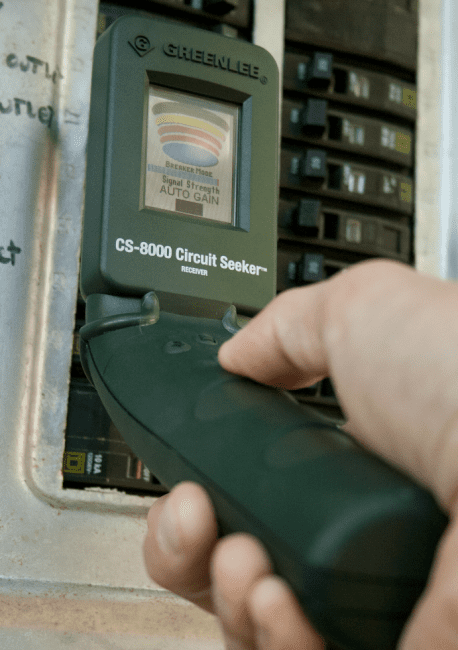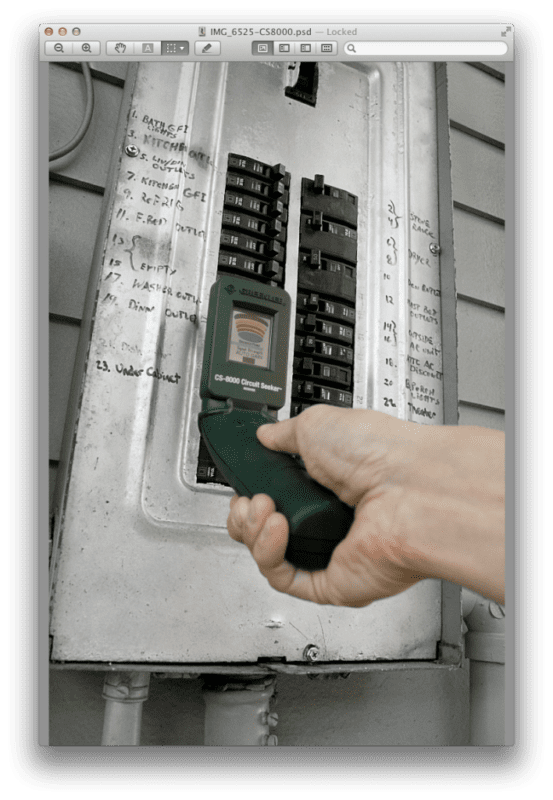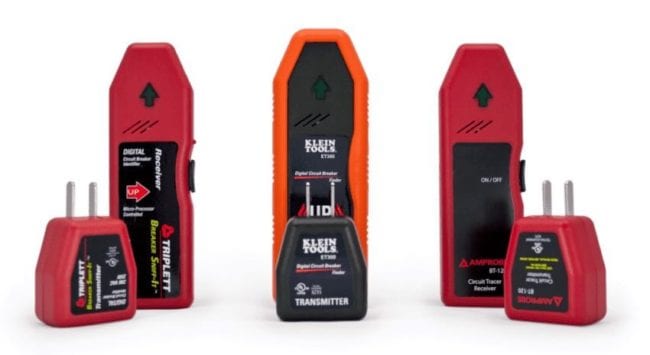Having looked at the best circuit breaker finders and tracers, we also wanted to cover how circuit breaker finders work. Some readers (perhaps even some electricians) may not know what really goes on under the hood of these tools. For most of us, the little plastic boxes seem like magic. They can peer into walls and trace both hot and open circuits. What’s the difference between a circuit tracer and a breaker finder? What makes these tools tick, and why are some so much more expensive and feature-rich than others? Hopefully, we can answer at least some of these questions and give you a greater appreciation for these tools.
Circuit Tracers vs Circuit Finders
“Tracer” is not a great word for the simpler circuit breaker finding devices. A tracer is typically a device used to follow the path of a circuit. Pros use these more sophisticated devices to trace wires in order to remodel a house without being blind to what’s going on behind the walls you may or may not be removing. You can also use these tools to find shorts or follow wire located within a conduit. And you can do this on energized (live) or de-energized (open) circuits.
A breaker finder typically only works on energized circuits. The transmitter plugs into an outlet and draws spikes of current off of the line—typically anywhere from 6-10 amps. It does this for a short duration, yielding a very strong signal. Because of this, the transmitter portion of this system is rather simplistic. There are no batteries, and it doesn’t really have to do much more than draw pulses of current that the receiver is designed to detect.
On the other side of the equation, the receiver sensitivity doesn’t have to be all that high in order to determine the proper breaker. There’s not much gain required. After all, it’s only intended to work on the short distance between the current-carrying parts in the breaker and the tool—literally an inch or two away at most.
How Circuit Breaker Finders and Testers Work
Advanced products like the Greenlee CS-8000 let you follow live circuits that may be as far as 3-5 feet overhead. This is possible because a circuit tracer is much more sensitive, so it can accommodate both weak and strong signals. There are a lot of ways in which these various tools work to achieve their goals. One technique is to inject a signal burst at the transmit frequency and to control the width of that frequency on the AC waveform. That’s for a live circuit. For a dead circuit, you’d have a burst of pulses at a prescribed interval—so a pulse and then some quiet time alternating back and forth. The receiver then looks for these signatures.
Of course, choosing a frequency and a modulation technique is a little bit like witchcraft. You’re trying to define something that not too many things interfere with. There are so many more noise sources now than there used to be (computer UPS systems, florescent lights, switching power supplies, etc). What you’re really aiming at is something which is not naturally occurring.
Another technique is to put your signal on the wire for some number of full cycles and then take the signal away for some cycles. Then you superimpose that again. That gives you some “marked space” which the receiver can differentiate from anything found in the real world. Not everyone uses the same techniques or the same frequencies, but the principles are all very similar.

Why So Sensitive?
A battery-operated tracer doesn’t draw that big of a current, so the receiver has to be more capable of amplifying the frequency of interest and differentiating that signal. Compare that to a very hot signal on a circuit breaker finder that doesn’t require near;y as much finesse. A circuit tracer can also do both open and energized circuits, so it needs to be able to look for two different signals.
When you’ve got a complete circuit you have current flow, so you sense the magnetic field created by the circuit on the wire. An open circuit has you looking more for an electrostatic field. So with a circuit tracer, you actually need to have two types of pickups. For the magnetic field, you use an inductor (100mH or similar). For the electrostatic, you may have a plate of copper or an area on the circuit board to detect this.
At the Core
There are microprocessors in both the transmitter and the receiver. Simpler microprocessors exist in the transmitter. This half of the system determines if the line is powered or not. It also needs to sense the AC waveform (when it crosses the “zero line”), so it knows where and when to insert the burst. In the receiver the microprocessor has a lot more to do. There’s digital filtering algorithms going on. It also controls the programmable gain amplifiers, so it sees the signal of interest properly.
When a circuit tracer follows an overhead live circuit, you’re looking at a signal range requiring several orders of magnitude more sensitivity than when you’re at the breaker. But the tool can do both tasks, so the processor has to be able to change the gain appropriately—and it has to do this quickly. With products like the Greenlee CS-8000 the LCD screen’s “waterfall bars” are controlled by this microprocessor as well. But regardless of the readout style, the microprocessor handles that as well.
Who Uses These Tools?
Anyone doing renovation is familiar with both residential and commercial buildings where the circuits weren’t identified properly. New buildings may label circuits very well, but older structures aren’t nearly as accurate or detailed. You need to know how circuit breaker finders work if you need to track down a short to ground or trace a circuit overhead. And if you need to open up the space between two rooms, these tools are great for tracing wires and saving a lot of time and energy.
Another use is for working in more sensitive areas, like hospitals. You want a good-quality circuit tracer due to all the interference. Plus, being able to identify the proper breaker takes on much more importance if it means you can avoid turning off granny’s respirator by accident!
Pro Tool Reviews wants to thank Richard Duke, product manager, electrical test & measurement for Greenlee, for taking the time to answer our questions about circuit breaker finders and circuit tracers (and the technology found under the hood of these tools). If you are a product manager and have an interesting story to share about how a particular tool or technology works, please feel free to send us a note at editor-AT-protoolreviews.com, so we can consider using it in a future article or contact you to get more information.




